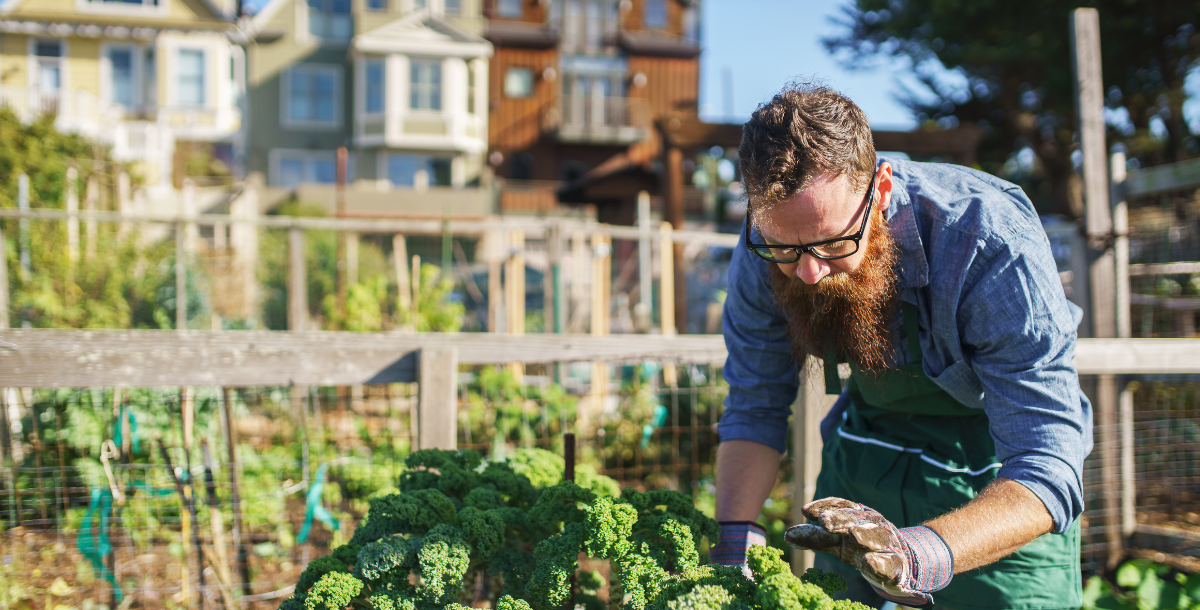Ever wonder what grows best in Ohio and Kentucky gardens? Here’s your answer.
If you live in Ohio or Kentucky, you’re in Zone 6. That’s not a science-fiction term, but a gardening term. It’s important to know what zone you live in when you’re planning to grow a garden of healthy crops for your family to enjoy. Learn the best crops to grow in Ohio and in Kentucky so you can begin eating better, fresher food.
Read more about healthy local fruit and vegetables.
What to grow in Ohio
The best vegetables to grow in Ohio are crops that survive hard winters. Even when soil temperatures reach a low of 35 to 45 degrees Fahrenheit, you can plant the following with good results:
- Beets
- Cabbage
- Carrots
- Cauliflower
- Lettuce
- Onions
- Parsley
- Parsnips
- Peas
- Radishes
- Spinach
- Turnips
Swiss chard, beans, cucumbers, pumpkins, squash, tomatoes, peppers, eggplant and okra do well in Ohio’s warmer soil temperatures of 50 to 75 degrees. There are plenty of fruits that grow in Ohio. Plant strawberries and blueberries during spring. Plant blackberry and raspberry brambles during the fall. These plants also survive the state’s harsh winters.
Ohio gardening tips
If you live in Ohio, plant vegetables such as corn, peppers, eggplant, beans and tomatoes in the late spring and early summer. These vegetables thrive in the long and sunny days. They don’t handle frost very well. Wait until the soil temperature is at least 60 degrees Fahrenheit before planting cucumbers, squash, pumpkins and beans.
What to grow in Kentucky
Most of Kentucky is Zone 6. If you live in the southwest corner, you’re in Zone 7. During your hot and humid summers, start your garden with delicious homegrown vegetables. The best crops to grow in Kentucky include:
- Bush beans
- Cucumbers
- Lettuce
- Onions and garlic
- Peas
- Peppers
- Potatoes
- Rhubarb
- Squash
- Tomatoes
If you want to plant fruits, consider fruit trees that grow well in Kentucky, such as American plum trees. These small, winter-hardy trees grow sweet fruit you can eat fresh and use to bake. Try planting elderberry and mulberry thickets and sassafras berries, which are also common in Kentucky.
Kentucky gardening tips
Living in Kentucky means you have fertile, well-drained soil — also called crider soil. It’s ideal for home gardening. In May, start to grow vegetables that love the heat. That includes peppers, squash, sweet corn and tomatoes. In August, start planting fall vegetables such as beets, lettuce, spinach and turnips.
Design your garden
Before planting, it’s a good idea to sketch out your garden design. Keep it simple. Grow your vegetables in three-foot-wide rows. This lets you reach the plants easily while you’re caring for them. You’ll also want to control weeds in your garden. Because different vegetables and fruit bushes need planting at different times, consider that when designing your garden.
It’s worth it to plant a vegetable and fruit garden. Most Kentucky adults believe healthy fruits and vegetables are not easy to find. Ohio residents can also improve their eating habits. Many communities in Ohio can grow healthier foods at home to lower their risk for heart disease, Type 2 diabetes and cancers.
Learn more about the primary care services we provide at Mercy Health.







2 Comments
Post a CommentMary
I was raised in Ohio and what I miss is it fresh fruits and vegetables. Where I live now, most of the fruits and vegetables have to be shipped in from California and Mexico.Chris Kent
Would the crops listed under Ohio grow well in North Kentucky? My family and I are moving out that way and are wanting to grow a variety of fruits and vegetables. Any advice would be appreciated!